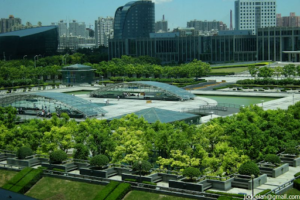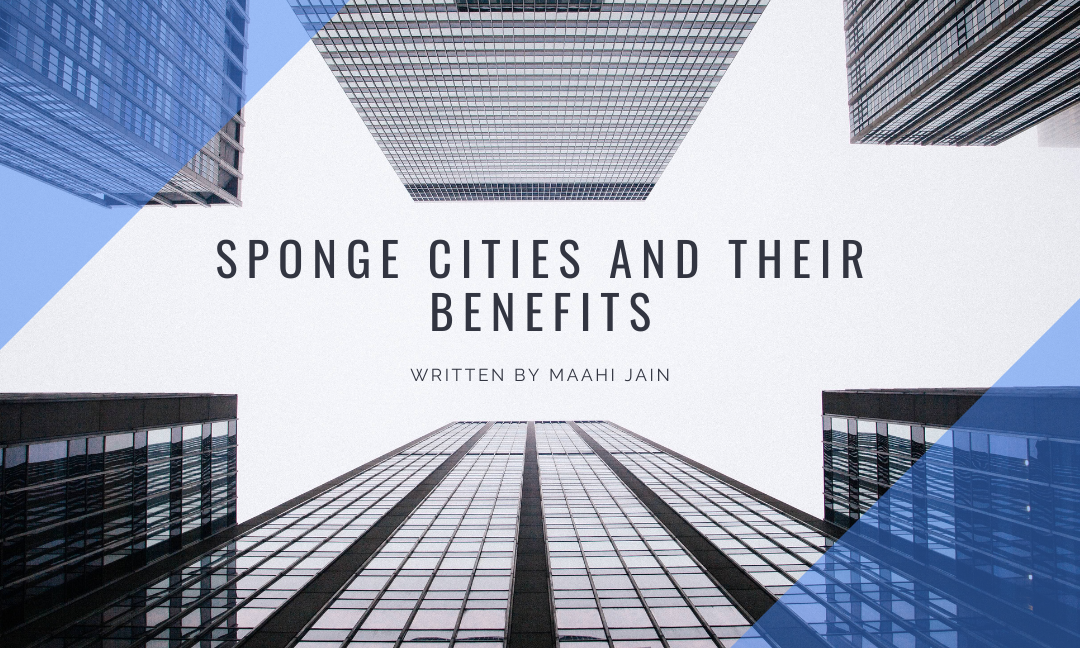Written by: Maahi Jain
Edited by: Tvisha Lakhani
Designed by: Kiritika Rana
Published by: Tvisha Lakhani
As Earth is approaching a 1°C rise in its average temperature, a sustainable and eco-friendly solution is desperately needed to mitigate both the short-term and long-term impacts of climate change. Recent accounts of severe flooding in New York, India, and Beijing are just one of the many consequences that global warming exhibits. In the early 2000s, an architect by the name of Kongjian Yu presented the idea of what would later be known as a sponge city.
The idea of sponge cities was to absorb the water through green infrastructure rather than channel it away by means of concrete. Sponge cities are meant to be designed in such a way that they are consistent with the environment, all while serving as a community—essentially incorporating nature into urban areas. Every city has a sponginess to it. However, to truly be a sponge city demands reliability on green infrastructure and veering away from gray infrastructure (concrete, pavement, etc.).
Sponge cities are essentially cities that act like a sponge (they absorb water). Simple enough, right? Although it may be an accurate representation, sponge cities are much more complex than that. Cities are termed “sponge city” when they’re designed in a way that rainwater and any agricultural runoff gets absorbed. This requires a high soil permeability and can be achieved through establishment of parks, gardens, drainage pavements, and green walls and roofs. This helps to prevent flooding and reduce any urban or environmental damage caused by it.

According to research done by Arup, sponginess can be determined through the amount of green and blue infrastructure (rivers, lakes, etc.), noting soil properties and their contribution to water absorbance, and measuring the water runoff, determined by the portion covered in green land. Seven cities (New York, London, Singapore, Mumbai, Auckland, Shanghai, and Nairobi) were investigated for their sponginess, with Auckland coming out at the top and London coming out at the bottom. Auckland can be credited for its green parks, and golf courses, whereas London is mostly concrete.
Not only do sponge cities absorb water, they filter and store it as well, reducing accumulation of water and potential floods. We can even see the concept of sponge cities being employed in our very own Kitchener, Ontario. A stormwater bylaw was put into effect in 2011, where residents were charged a fee based on the amount of water runoff. If residents managed to minimize water runoff within the area, they’d end up paying a lower fee.
All it really takes for a city to become spongy is simply by adding in more green infrastructure and vegetation. Take care in noticing your soil’s permeability and how soil quality can be improved to accommodate for a higher water retention. China has the most number of sponge cities—almost 30—and was done by improving their cities’ foundations to allow for more absorption.
Having a higher sponginess can be done even through simple steps, like planting a tree or improving water runoff in your household. Sponge cities are essentially the definition of “reuse, reduce, and recycle”. It doesn’t take much to maintain this notion!
Works Cited
Grossenbraeucker, V. (n.d.). How “Sponge Cities” Can Mitigate the Climate Change Risks. dormakaba Blog. Retrieved August 13, 2023, from https://blog.dormakaba.com/how-sponge-cities-can-mitigate-the-climate-change-risks/
Harrisberg, K. (2022, April 11). What are ‘sponge cities’ and how can they prevent floods? Climate Champions. Retrieved August 13, 2023, from https://climatechampions.unfccc.int/what-are-sponge-cities-and-how-can-they-prevent-floods/
Martínez, M. (2022, March 23). Sponge city: what it is, how it is designed and real examples. Tomorrow.City. Retrieved August 13, 2023, from https://tomorrow.city/a/sponge-city
Razavi, K. (2021, November 29). What can a ‘sponge’ teach us about building resilient cities? Turns out, a lot – National | Globalnews.ca. Global News. Retrieved August 13, 2023, from https://globalnews.ca/news/8405531/sponge-design-resilient-cities-flooding/
Sponginess and why it matters. (n.d.). Arup. Retrieved August 13, 2023, from https://www.arup.com/perspectives/sponginess-and-why-it-matters
What Is a Sponge City and How Does It Work? (2022, April 21). ArchDaily. Retrieved August 13, 2023, from https://www.archdaily.com/979982/what-is-a-sponge-city-and-how-does-it-work
Wikimedia Commons. (n.d.). File:上海科技馆 – panoramio – George Wenn (1).jpg. Retrieved
from https://commons.m.wikimedia.org/wiki/File:%E4%B8%8A%E6%B5%B7%E7%A7%91%
E6%8A%80%E9%A6%86_-_panoramio_-_George_Wenn_(1).jpg

